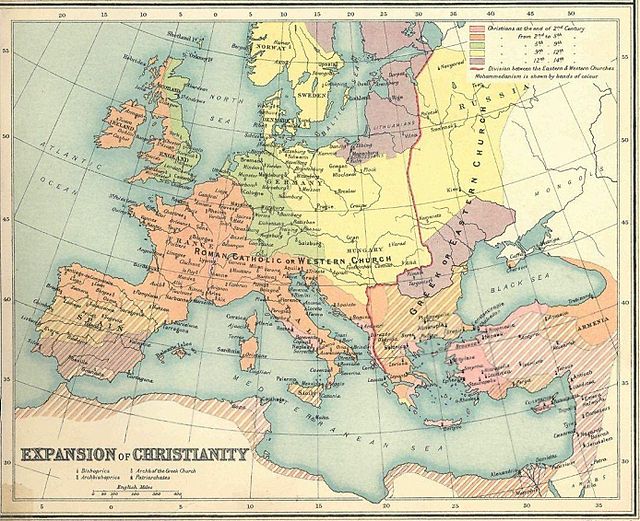Eastern Europe is a subregion of the European continent. As a largely ambiguous term, it has a wide range of geopolitical, geographical, ethnic, cultural, and socio-economic connotations. Its eastern boundary is marked by the Ural Mountains, whilst its western boundary is defined in various ways. Most definitions include the countries of Belarus, Russia, Ukraine, Moldova and Romania while less restrictive definitions may also include some or all of the Balkans, the Baltic states, the Caucasus and the Visegrád group.
Expansion of Christianity
Belarus, officially the Republic of Belarus, is a landlocked country in Eastern Europe. It is bordered by Russia to the east and northeast, Ukraine to the south, Poland to the west, and Lithuania and Latvia to the northwest. Covering an area of 207,600 square kilometres (80,200 sq mi) and with a population of 9.1 million, Belarus is the 13th-largest and the 20th-most populous country in Europe. The country has a hemiboreal climate and is administratively divided into six regions. Minsk is the capital and largest city; it is administered separately as a city with special status.
Stamp with the Cross of St. Euphrosyne by Lazar Bohsha from 1992
Napoleon's Grande Armée retreating after his invasion of Russia and crossing the Berezina river (near Barysaw, Belarus)
The first government ("activists") of the Belarussian People's Republic (BNR, Беларуская Народная Рэспубліка), 1918. Sitting, left to right: Aliaksandar Burbis, Jan Sierada, Jazep Varonka, Vasil Zacharka. Standing, left to right: Arkadź Smolič, Pyotra Krecheuski, Kastuś Jezavitaŭ, Anton Ausianik, Liavon Zayats.
Meeting in the Kurapaty woods, 1989, where between 1937 and 1941 from 30,000 to 250,000 people, including Belarusian intelligentsia members, were murdered by the NKVD during the Great Purge





